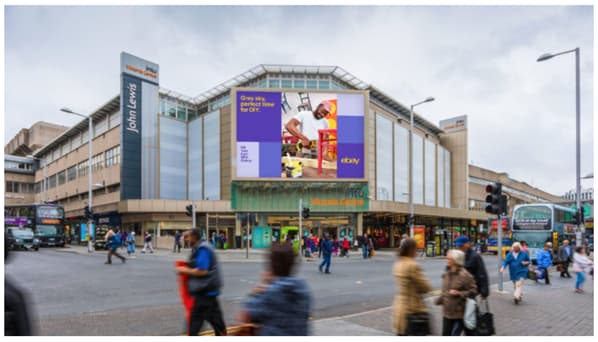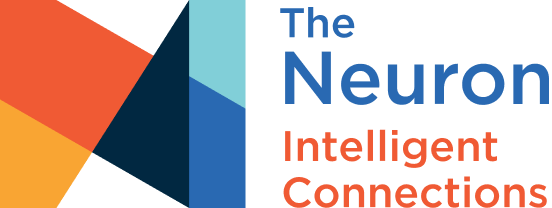Out of Home media: a stalwart of traditional advertising media, and unparalleled in its ability to reach mass audiences – but is digital advertising the future of Out of Home (OOH)?
As media owners and inventory holders recover from the dip in sales caused by the COVID-19 pandemic, it’s clear that OOH is increasingly a force to be reckoned with. The Out of Home Advertising Association of America charts a year-on-year increase of 38% in the third quarter of 2021.
It was, however, digital OOH that led the overall recovery. The segment jumped 56% year on year, just under 20% higher than the increase for OOH in general.
Why, then, do advertisers seem to be turning towards digital media as the future of OOH and outdoor advertising?
In a nutshell, there are three overarching drivers of this trend towards digital outdoor advertising:
- Digital out of home is cheaper and more accessible than ever before
- Digital out of home is more measurable than traditional OOH media
- Digital out of home is more effective than traditional OOH
Digital Display Advertising Is More Accessible to Smaller Businesses
OOH media offers many benefits to smaller, localized businesses – but prices and availability have historically locked them out of the medium.
This is now changing. The US digital out of home (DOOH) market was evaluated at $8.5 billion in 2019, and has recently been forecast to reach $11.3 billion by 2026.
The reasons for this?
Digital street furniture, digital billboards and other digital signage becoming significantly more widespread, with prices decreasing as a result. Once the preserve of major city centers, it’s now easy to find digital screens in all manner of public places in cities as well as regional towns.
For smaller businesses with a tight advertising budget, this makes digital displays a significantly more tempting proposition. Placed-based media offers advertisers high visibility with long dwell times, directly in the locality in which most of their customers are based – and SMB advertisers are keen to leverage these benefits in the long term.
OOH Digital Ads are More Measurable Than Traditional Media
In the digital age, marketing strategies are rapidly becoming more and more data driven – and that’s no bad thing. After all, if you can track the success of your campaign, you can make improvements to it. And if you can make improvements to it, you can generate a better return.
In a world where you can track online campaign performance in real time, traditional OOH seems out of place. Whilst its power to reach mass audiences is unparalleled, the fact there has traditionally been no direct insight into the success of your DOOH ads is a sticking point for many advertisers.
However, with the advent of programmatic digital Out Of Home (pDOOH), this is changing.
Programmatic digital OOH advertising is the use of a state-of-the-art automated buying platform to bid on advertising in real time rather than using an intermediary agency, much like how you purchase online media. If you buy DOOH ads programmatically, you’ll be able to run targeted, bespoke and highly customized campaigns with real-time campaign analytics such as budget spend, impressions, screen playouts, and eCPM.
This level of insight is hugely valuable to advertisers, not least small businesses that need to drive as much return as possible from an initial investment. And, with small businesses being an essential driver of OOH growth, this means that the future is looking increasingly digital for OOH.
Digital Out of Home Is More Effective
It’s also fair to say that digital OOH has the power to deliver far greater results than traditional OOH.
There are two main reasons for this.
Firstly, digital screens allow for a much more dynamic approach to ad creative. Rather than being constrained by a static poster, you can create dynamic content with brighter colors, and even include video and animation into your outdoor media to make it more eye-catching to passers-by (although be careful this is not a distraction, especially with roadside DOOH).
In a crowded public space with many things competing for consumers’ attention, this capability makes all the difference in your target audience’s ability to recall your ad at a later date.
Secondly, when bought programmatically, digital ad space offers much more flexibility in terms of when you advertise – and when you pay to advertise.
If you buy space on a traditional billboard, you’re paying for your ad to remain up for the entirety of an allotted time period. Whilst that might be good for overall visibility, it means that you’re potentially paying for your ad to remain, even though it’s unlikely to be generating a good return at specific periods of time when you audience is not in the vicinity of your advertising, or receptive to it.
Programmatic DOOH allows you to set conditions on the ad space that you buy, so that you can define a target audience that’s right for your product, choosing the days and even specific time period that your campaigns will play to that audience. The result is that you only pay for ad space when you can advertise to the right people, at the right time and in the right place, ensuring an effective use of your budget.
eBay took advantage of this capability with a DOOH media advertising campaign that promoted different products in different weather conditions. On sunny days, billboards advertised gardening products and equipment for outdoor hobbies, whilst adverts for indoor DIY products were shown on cloudier and rainy days.

(Source: macrommnews.com)
Find the Right Programmatic DOOH Platform For Your Business
It’s clear that not only is digital the future of out of home advertising, it’s also programmatic. This means that to leverage digital OOH ads to their full capacity, you’ll need to find a pDOOH platform that works for you.
Specially designed with SMBs in mind, The Neuron is an intuitive pDOOH platform which connects media buyers to a wide range of ad inventory. Single-click processes and real-time dashboards allow you to launch, monitor and optimize your campaign whilst working with budgets to suit your business and tight schedules.

